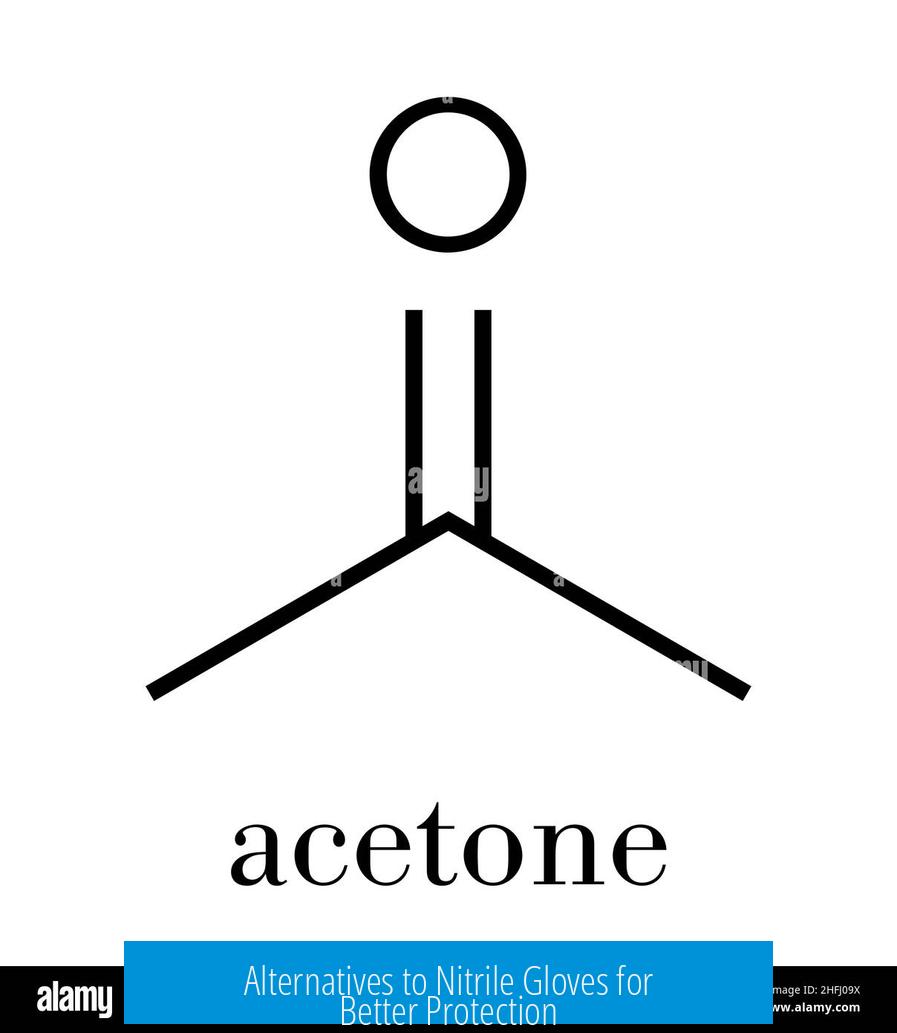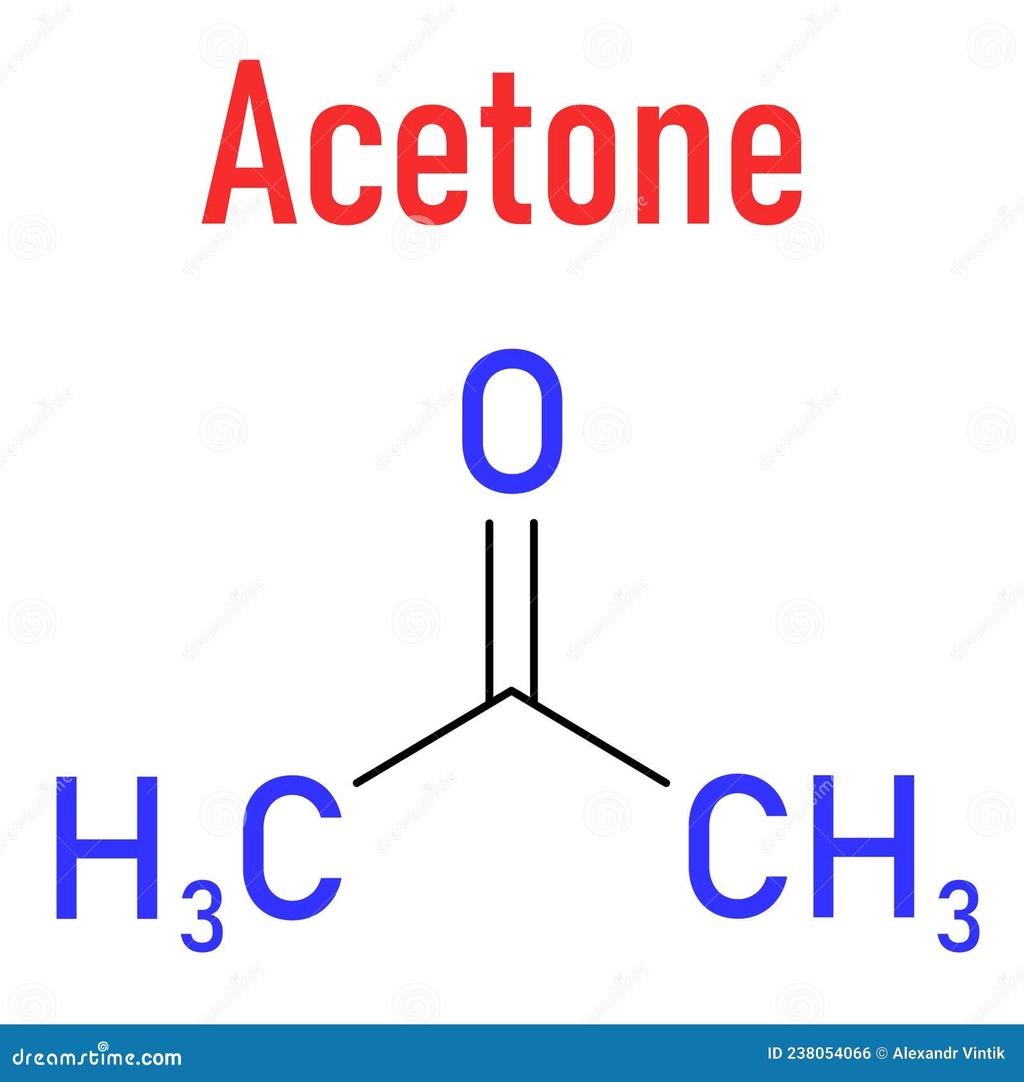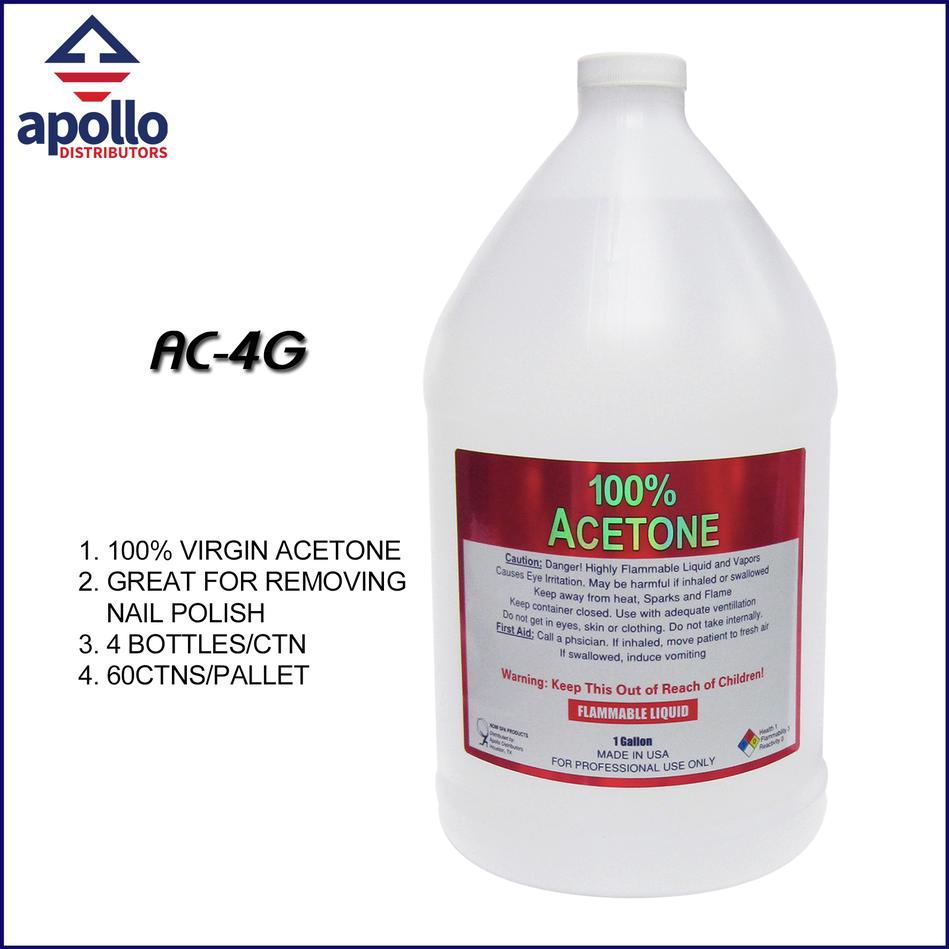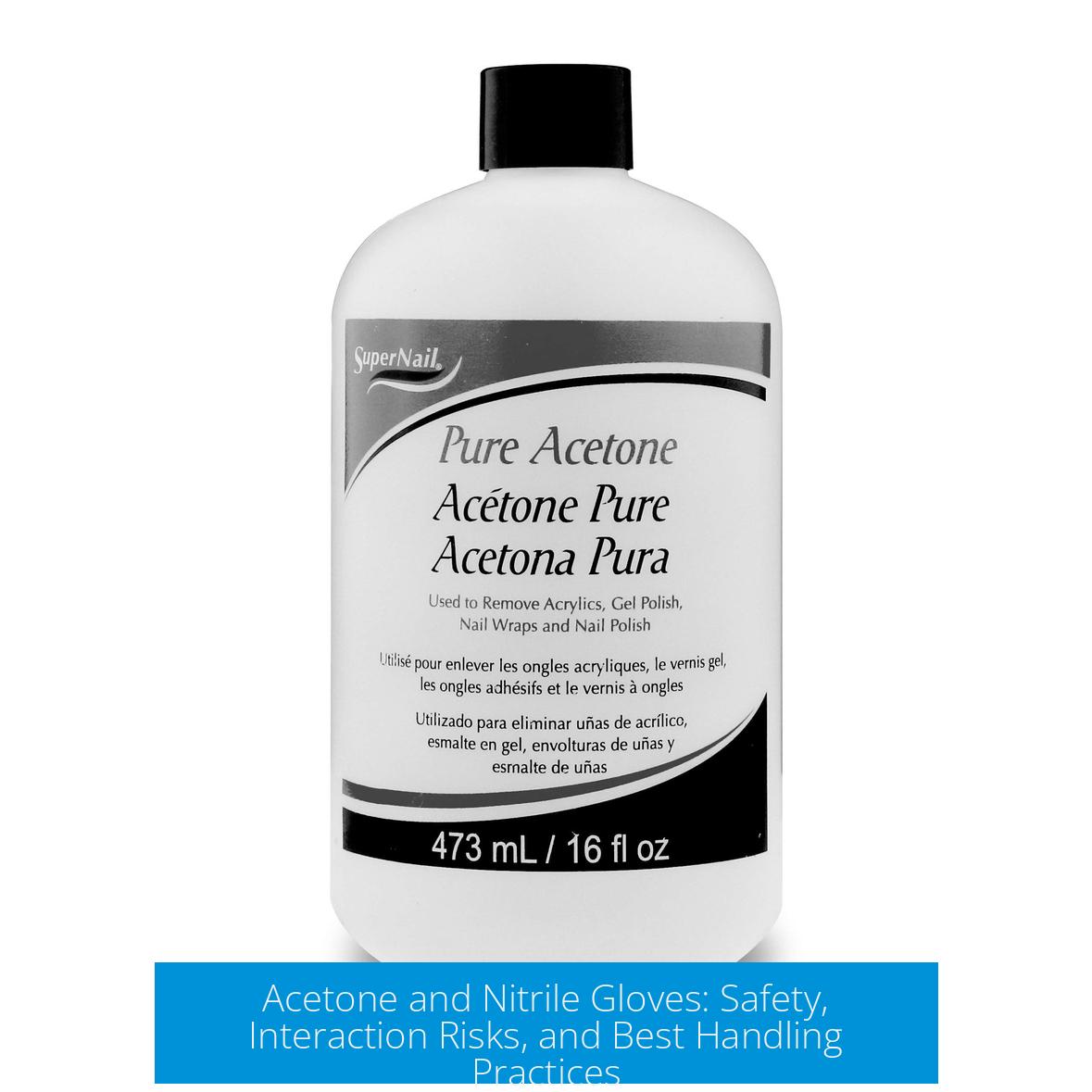Acetone and Nitrile Gloves: Safety, Interaction, and Best Practices

Nitrile gloves provide some protection against acetone but acetone gradually weakens nitrile, which can lead to glove failure and skin exposure. This article explores the interaction between acetone and nitrile gloves, explains risks, and outlines best practices for safe handling.
How Does Acetone Affect Nitrile Gloves?
Acetone is a powerful solvent that slowly degrades nitrile glove material over time. This degradation reduces the glove’s mechanical strength.
- The weakening effect occurs gradually, particularly when gloves are stretched.
- When stretched too much, weakened gloves can tear or break, allowing acetone to contact the skin.
- Before breaking, gloves still offer basic protection against acetone.
The slow degradation suggests that nitrile gloves are not fully resistant to acetone but provide transient protection during use.
Recommended Usage Practices When Handling Acetone with Nitrile Gloves
To minimize risk while working with acetone, specific precautions help maintain glove integrity and user safety.
- Always wear gloves when handling acetone to protect skin from solvent and dissolved harmful substances.
- Avoid rigorous movements like scrubbing or stretching with gloved fingertips to reduce tears.
- Inspect gloves regularly and replace them proactively before any visible damage occurs.
- Switch gloves frequently, especially if they contact any solvent other than water.
These habits reduce skin exposure and prolong glove usability during acetone handling.
Understanding Permeability and Solvent Penetration of Nitrile Gloves

Nitrile gloves are not impermeable to solvents; many solvents penetrate them at different rates.
- Solvents can carry dissolved chemicals through the glove material into contact with skin.
- Examples include DMSO and dichloromethane (DCM), which cross nitrile rapidly, though not instantly.
- Prompt glove changes help prevent prolonged solvent contact and penetration.
Due to this permeation, nitrile gloves are useful but limited against sustained or heavy acetone exposure.
Effect of Acetone Mixtures on Glove Permeation
Real-world acetone use often includes chemical mixtures, which change how solvents permeate gloves.
- Permeation data for individual chemicals do not fully apply to mixtures.
- Impermeable components in mixtures can slow or block penetrations.
- Permeability may increase or decrease depending on components’ interactions.
This complexity makes it difficult to precisely predict glove protection with acetone mixtures.
Reducing Risk Through Minimizing Exposure Time
Shortening the duration of contact between acetone and gloves limits overall solvent permeation.
- Less contact time means fewer solvent molecules cross the glove barrier.
- Minimizing exposure enhances glove performance and user safety.
Planning work to reduce glove contact with acetone is effective risk management.
Alternatives to Nitrile Gloves for Better Protection

Some gloves give stronger resistance to acetone and solvents than nitrile.
- Butyl rubber gloves have superior solvent barrier properties.
- They provide longer-lasting protection against acetone exposure.
- Using thicker gloves reduces tearing risk during use.
Choosing the right glove depends on the duration of exposure and solvent concentration.
Environmental and Practical Considerations in Acetone Use
Acetone use should be minimized where possible to avoid environmental pollution.
- Soap and detergents can clean glassware effectively without acetone.
- Acetone is primarily useful for quickly drying glass surfaces.
- Excessive use releases organic solvents unnecessarily into the environment.
Practice eco-friendly solvent use and consider alternatives when appropriate.
Secondary Containment and Double-Gloving
Additional protective measures improve safety when working with acetone and nitrile gloves.
- Double-gloving adds a secondary barrier against glove failure.
- Secondary containment, such as holding samples inside larger protective trays, reduces exposure risk.
Combining these practices enhances defense against accidental skin contact with acetone.
Summary of Key Points

- Acetone degrades nitrile gloves over time, increasing tear risk and potential skin exposure.
- Wear gloves and avoid stretching or scrubbing motions to limit glove damage.
- Replace gloves often, especially after solvent contact, before visible damage appears.
- Nitrile gloves are permeable to many solvents including acetone, so exposure duration must be minimized.
- Glove permeability varies with chemical mixtures; single-chemical data may be insufficient.
- Consider butyl rubber gloves for improved solvent resistance.
- Reduce acetone use environmentally by opting for alternatives when appropriate.
- Double-gloving and secondary containment measures add safety layers.
Acetone and Nitrile Gloves: What You Need to Know for Safe Handling
Are nitrile gloves safe to use with acetone? The short answer: not really, at least not for long. Acetone is a solvent that loves to wreak havoc on nitrile gloves, slowly weakening them until they tear, exposing your skin to the chemical. Let’s unpack that and arm you with practical advice for working safely.
Nitrile gloves are the go-to for handling many chemicals. They are tough, flexible, and generally resistant to oils and mild solvents. But acetone? That’s a different story. Acetone’s aggressive nature means it degrades nitrile in a slow but steady way. When you stretch those gloves—say, scrubbing vigorously—thin spots appear and tears can form quite easily. Before they break, nitrile gloves still block acetone to some extent, but that protection fades quickly.
Imagine cleaning brushes or wiping surfaces coated in acetone. Wearing nitrile gloves is better than bare hands. However, scrubbing hard or wearing the same gloves for hours invites trouble. You risk soaking your skin through tiny tears and microscopic permeation.
Why Even Wear Nitrile Gloves With Acetone?
Well, acetone is no joke for your skin. Even a little contact can strip natural oils, leaving skin dry, irritated, and vulnerable. Dissolved substances in acetone might sneak in through compromised gloves and cause reactions or burns. Gloves act like a barrier, slowing down exposure and giving your skin some much-needed defense.
Still, you have to respect the gloves’ limits. Excessive stretching—like scrubbing with your fingertips—weakens the glove’s material. Experts recommend regularly checking gloves for wear and changing them even before you see tears. Think of gloves like disposable shields, not magic invincibles.
Permeability: The Sneaky Side of Nitrile

What about acetone seeping right through nitrile, even without a tear? It happens. Nitrile isn’t perfectly impermeable to solvents. Acetone, DMSO, DCM—all can permeate through nitrile, some faster than others. Practically, this means some solvent molecules pass through the glove material, carrying dissolved chemicals to your skin’s surface.
A solid rule to follow: change gloves any time they come into contact with solvents different from water. This habit limits permeation risk. It’s better to switch gloves frequently than to pin hopes on a single pair lasting forever.
Mixing Acetone With Other Chemicals? Watch Out!
Permeation data manufacturers provide usually cover individual chemicals. Real-life mixtures complicate matters. A solvent blend that includes acetone might let chemicals permeate faster or slower than pure acetone alone. One component in the mix may be impermeable, blocking others, or the opposite may happen, enhancing passage.
In short: glove resistance charts don’t always translate directly to mixtures. Play it safe—act as if the mixed solvent could be worse for your gloves than acetone alone.
Time Matters: Keep Exposure Short
The more your gloves sit soaked in acetone, the more the solvent creeps through. Short contact time reduces this risk drastically. Whether you’re wiping down surfaces or cleaning glassware, work efficiently and don’t linger with acetone against your gloves.
Thinking practically, wear gloves only while needed, then take them off. This lets your hands breathe and reduces solvent buildup inside the glove.
Feeling Wary About Nitrile? Try Butyl Rubber Instead

If you frequently handle acetone or need extra protection, nitrile gloves aren’t the best choice. Butyl rubber gloves offer superior resistance. While nitrile may break down in minutes, butyl rubber gloves last longer, blocking acetone penetration effectively.
Butyl gloves may be bulkier and less nimble, but your skin will thank you. If speed isn’t a priority but safety is, going for butyl is smart. Alternatively, latex and neoprene gloves offer some protection but fall short of butyl’s chemical resistance.
Double-Gloving: When One Glove Isn’t Enough
For extra peace of mind, consider double-gloving when working with acetone. Wearing one pair of nitrile gloves under another adds a layer of secondary containment. If the outer glove tears, you still have inner protection.
It’s like a glove-inception of safety. You might look like a robot, but a little extra coverage beats a painful chemical burn.
Environmental Reality Check: Do You Really Need Acetone?
Here’s a surprising tip: you could skip acetone altogether for routine cleaning. Soap and detergent get the job done for most tasks and don’t pollute the environment like organic solvents do. Acetone shines only when you need quick drying, such as prepping glassware for lab work.
The widespread acetone obsession is often overkill. Using it sparingly reduces your glove risks and benefits the planet.
Choosing the Right Glove: What to Consider
- Material resistance: Nitrile is not acetone-proof.
- Thickness: Thicker gloves last longer but may reduce dexterity.
- Length: Longer gloves protect more of your arm from splashes.
- Work type: Light contact vs. heavy scrubbing impacts your glove choice.
- Allergies: Latex can trigger allergies; nitrile is safer for most.
In sum, pick gloves that suit your exposure level and task. Carry spares and swap them frequently for best protection.
Summary Takeaways:
| Topic | Key Fact & Advice |
|---|---|
| Effect of Acetone on Nitrile Gloves | Acetone weakens nitrile, causing tears with stretching. |
| Recommended Usage | Wear gloves; avoid stretching; swap gloves regularly. |
| Permeability | Solvents penetrate nitrile over time; rapid glove changes matter. |
| Glove Permeation with Mixtures | Mixtures affect permeability unpredictably; act cautiously. |
| Reducing Exposure Time | Shorter contact cuts permeation risk. |
| Alternative Gloves | Butyl rubber offers better resistance than nitrile. |
| Environmental Impact | Limit acetone use for sustainability. |
| Double-Gloving | Extra protection to guard against perforations. |
Final Thoughts
So, can you use nitrile gloves with acetone? Sure, but only briefly and with care. Don’t trust them as a permanent shield. Swap gloves frequently, avoid stretching, and consider butyl gloves if acetone contact is routine.
Could you switch to soap and water for cleaning instead? That’s a healthier choice for your skin, gloves, and our planet.
Glove up smartly, respect acetone’s tough nature, and keep those hands safe!
Can nitrile gloves provide full protection against acetone?
Nitrile gloves offer basic protection but acetone slowly weakens them. They can tear with stretching, letting acetone reach the skin. Regular inspection and replacement are necessary.
How should I handle acetone while wearing nitrile gloves?
Wear gloves when handling acetone but avoid scrubbing or stretching the gloves too much. Change gloves often, even if they look intact, to prevent exposure.
Do all solvents penetrate nitrile gloves the same way?
Nitrile gloves let many solvents through to some extent. Some solvents, like DMSO and DCM, penetrate faster. Changing gloves frequently reduces risk.
Are glove permeation charts reliable for acetone mixtures?
Permeation charts usually cover single chemicals. Mixtures can change permeability unpredictably, so charts may not reflect real exposure well.
Is there a better glove alternative to nitrile for acetone use?
Butyl rubber gloves provide stronger resistance to acetone and other solvents. They are a safer choice if you need better barrier protection.





Leave a Comment